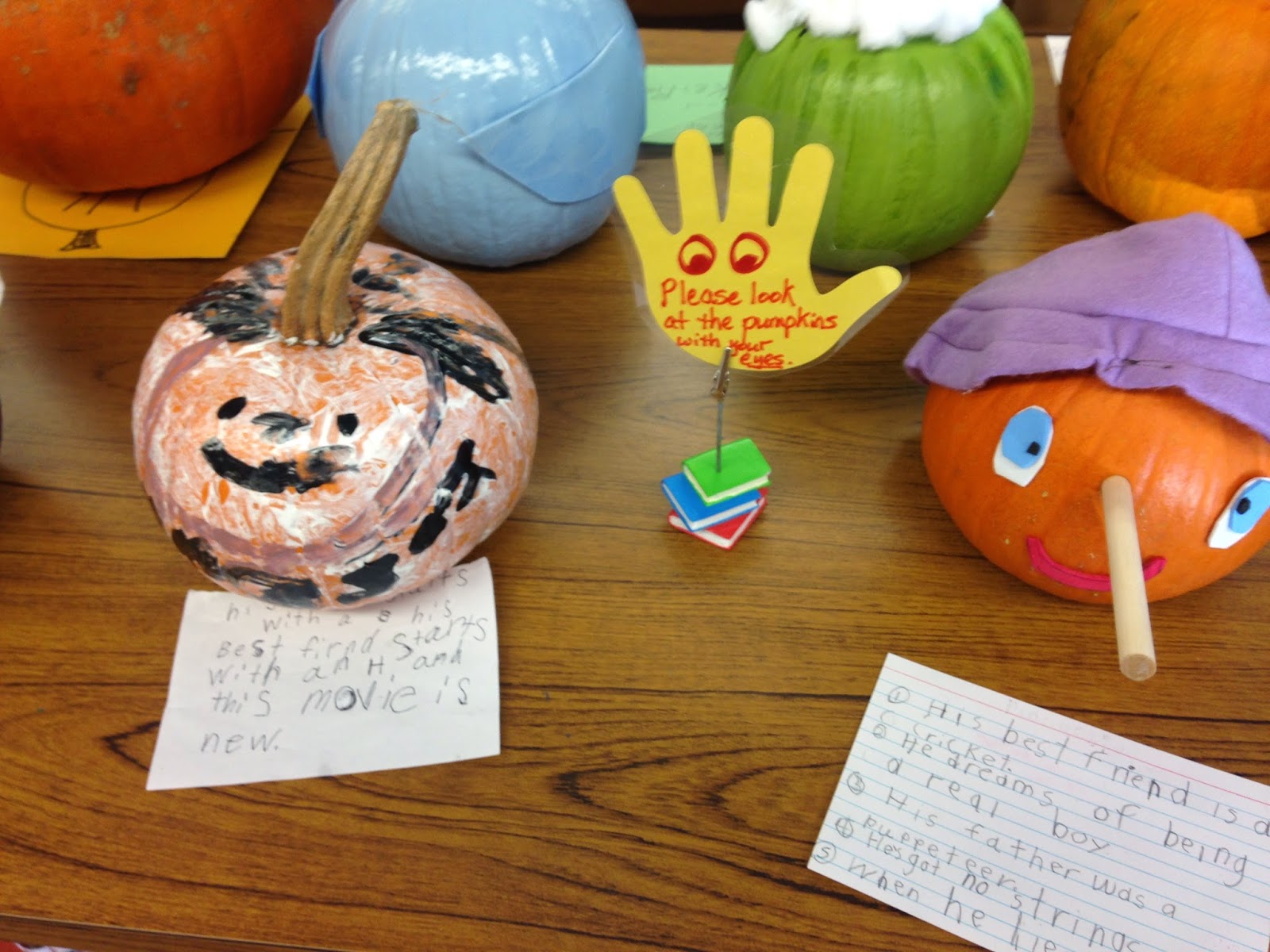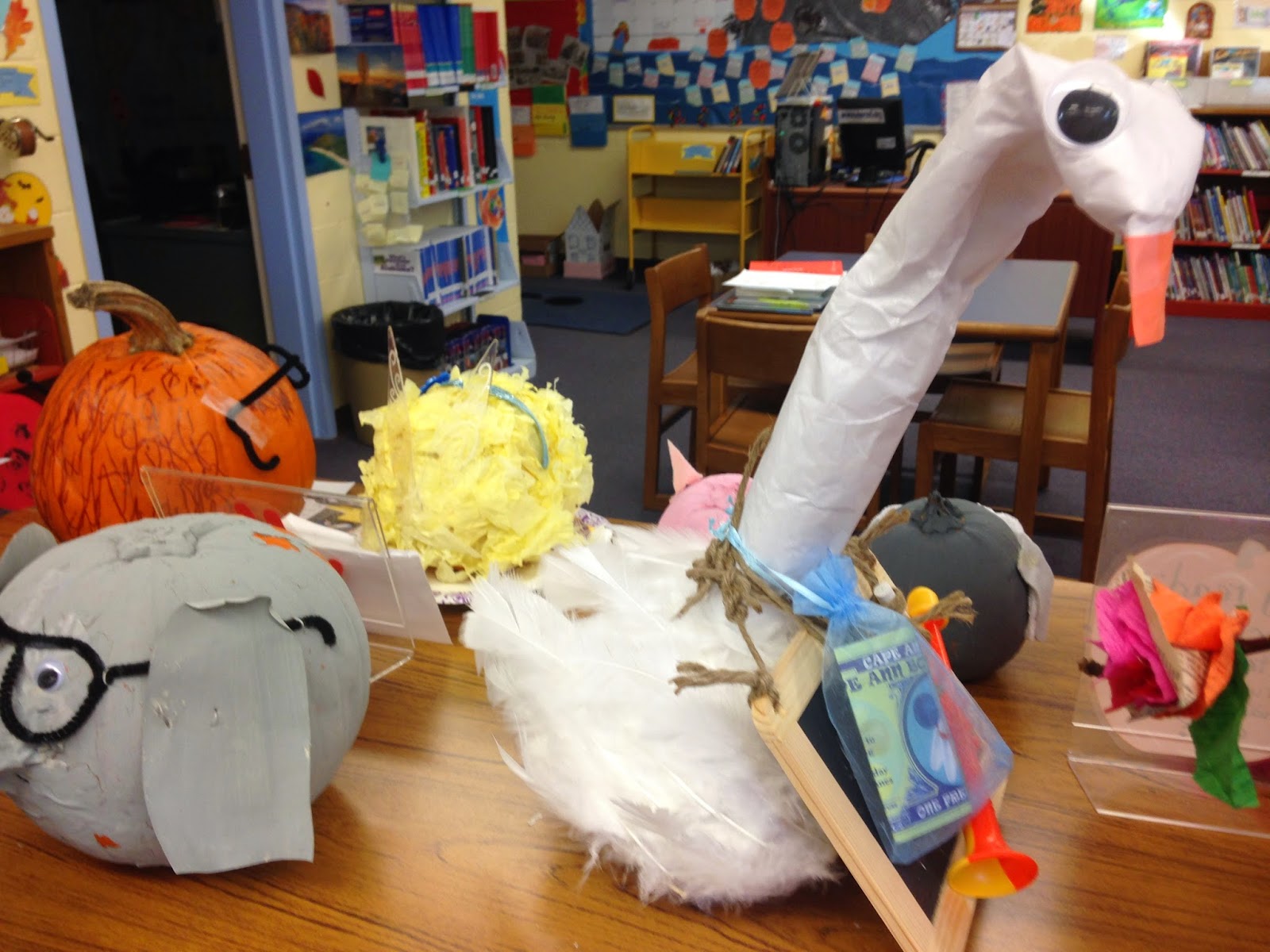Thursday, October 30, 2014
WOW…..making volcanoes in third grade!
Students in third grade were learning about different types of volcanoes in Science. This is a timely topic based on what is occurring in Hawaii….Today they watched a YouTube video about the volcano and learned about Sheild, Cinder Cone, and Composite volcanoes. Students made these various types of volcanoes out of clay and "erupted" them with vinegar. It was so much fun seeing how engaged they were today. One student said, "I LOVE SCIENCE!"
Math Workshop
Teachers like Miss Stanley (grade 2) have learned about the math workshop model and are using it as a way of teaching math in their classrooms. This model allows for differentiation of instruction, which means teaching students in the way that they learn best and working within a model that allows you to teach at a student's level. In this room, the teacher teaches a brief focused lesson to the entire class and then breaks the students into groups to work on specific (connected) activities. You will see students working on different applications on our new iPads, using manipulatives to visualize place value, and paper/pencil practice opportunities. Students are also playing games from the EveryDay Math curriculum. Enjoy these pictures. Students circulate from station to station as they complete the activities. Today, I enjoyed working with a student on IXL (on an iPad). This math program is adaptive, in that it gets more difficult as the student answers questions correctly. In this lesson, Miss Stanley directed the students to the specific unit she wanted them to begin on…..what a great model!!!
Miss Kelley's First Grade Reader's Theater
What is fluency?
According the National Reading Panel (2000), fluency is the ability to read text with speed, accuracy and proper expression. Fluent readers:
Why is fluency important?
“Fluency is important because it provides a bridge between word recognition and comprehension.” (Reading Links, 2002, p. 9).
Fluency doesn’t ensure comprehension, but comprehension is difficult without fluency. If a reader is constantly stopping to decode and figure out unknown words, most likely meaning will be disrupted and the process of reading becomes long and laborious.
When students make gains in reading fluency, they are able to put their energies into comprehension and are able to analyze, interpret, draw conclusions, and infer meaning from texts.
The 3 Components of Fluency
In order to implement fluency teaching into reading instruction, teachers need to be aware of the three components of fluency.
Fluency Instruction
Teachers need to select and facilitate the best methods of fluency instruction for their children and their classrooms. The following four components are needed for good fluency instruction.
This is a GREAT example of how Miss Kelley gives students ways to practice and perform: |
Monday, October 27, 2014
E.E.S. First Grade Pumpkin Projects!
It is so much fun watching the first graders proudly parade to the library to drop off their pumpkin projects. This year the pumpkins were especially creative! ENJOY!!!
Subscribe to:
Posts (Atom)



























































